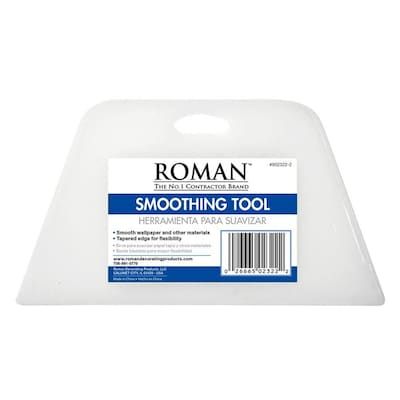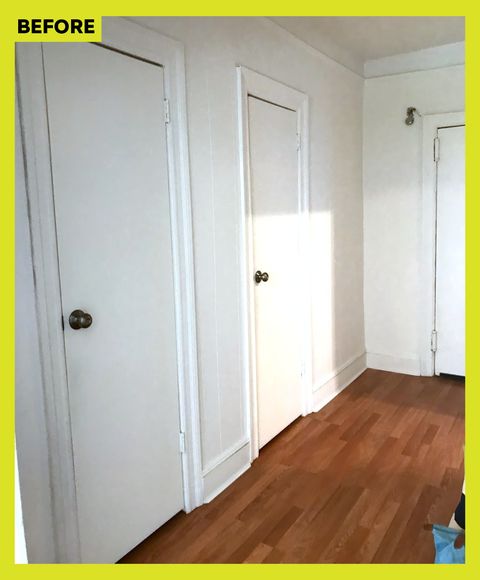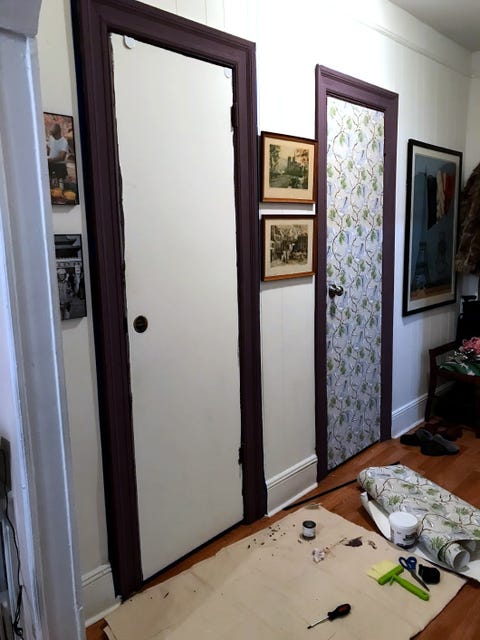Fabric Door Quilt Panel Valentine Easy Nonquilter
At any given time, I'm always looking for new decorating projects to do around the house. And spending more time than usual at home has resulted in even more project ideas—no surprise. The latest unadorned surface to catch my attention was a set of closet doors. On one hand, yes—I'm lucky enough to have snagged an apartment with multiple closets, a rarity in New York real estate. But that means that a long stretch of wall space was taken up by cheap, builder-grade doors (with equally cheap, builder-grade doorknobs). So this week, I decided to do something about it.
The one redeeming quality of these doors is that they have molding, a detail I wanted to highlight. But the doors themselves needed to be covered. I've also always loved the look of chinoiserie panels—and seeing as doors are roughly the same size, I used that as my inspiration for the project. Here's what I did.
What You'll Need
- Wallpaper (I opted for this new pattern by Victoria Larson for Stout wallpaper in the more neutral taupe shade so that I could add a bold trim)
- Wallpaper paste
- Wallpaper brush
- Smoothing tool
- Paint (I went for Annie Sloan chalk paint in Rodmell)
- Scissors
- X-acto knife
- Measuring tape
- Painters tape
- Paintbrush
More From House Beautiful

How to Do It
Step 1: Remove hardware
Use a screwdriver to remove the knobs from your doors so that you have a completely flat surface to wallpaper (and don't get any paint on them in the next step). There will be a hole in the door which you'll paper right over and then cut out later.
Step 2: Paint the molding
Apply painter's tape around the outside edge of the molding on your door and (important!) along the edge of the molding inside the door. If the door doesn't have molding, you can install some, or just paint a two-inch-wide border around the door to mimic the look. (To prep for the latter, just tape along the outside edge of that border using a laser level to make a straight line.) Since I knew I'd be wallpapering the door, I didn't bother taping over it—but if you want to be extra-neat, tape off the edges of the door, too.
Shake and stir your paint, then paint the trim and let dry for at least an hour before moving on to the next step.
Step 3: Cut wallpaper
Now for the wallpapering: Measure your door and cut the wallpaper to fit, leaving an inch or two around all sides just in case. My wallpaper roll was just a few inches wider than the door, so I just cut the height to fit and then trimmed extra from the sides.
Step 4: Apply wallpaper
Use a brush to apply a thin coat of wallpaper paste in sections of about 2 feet (I found it easiest to start at the top and work down). You'll want to make sure your paper is completely aligned with the edge of the door, then use the smoothing tool to completely flatten the paper and remove any wrinkles or air pockets before applying the next section of paste and repeating. If pasted wallpaper makes you nervous, you can totally use a peel-and-stick option here, but I actually find pasted paper easier to install because you can move it around to position it perfectly. Once the walllpaper looks right, let the paste dry for at least an hour.
Step 5: Trim
Using an X-acto knife, cut out the hole for the doorknob and trim any excess paper from the top and sides of the door.
Step 7: Replace hardware
Replace your doorknobs (or swap in new ones!), then remove your painter's tape, and voilà! A brand new, much more interesting door.
Follow House Beautiful on Instagram.
Hadley Keller is House Beautiful's digital director. She oversees all digital content for the brand as well as working on the print magazine. She has covered covering design, interiors, and culture for 10 years in New York. She served as Associate Market Editor, Design Reporter, and News Editor for Architectural Digest and AD PRO before joining House Beautiful. Hadley is a staunch maximalist and vocal opponent of the Open Floor Plan.
Source: https://www.housebeautiful.com/design-inspiration/a32332220/closet-door-wallpaper-diy/



0 Response to "Fabric Door Quilt Panel Valentine Easy Nonquilter"
Post a Comment